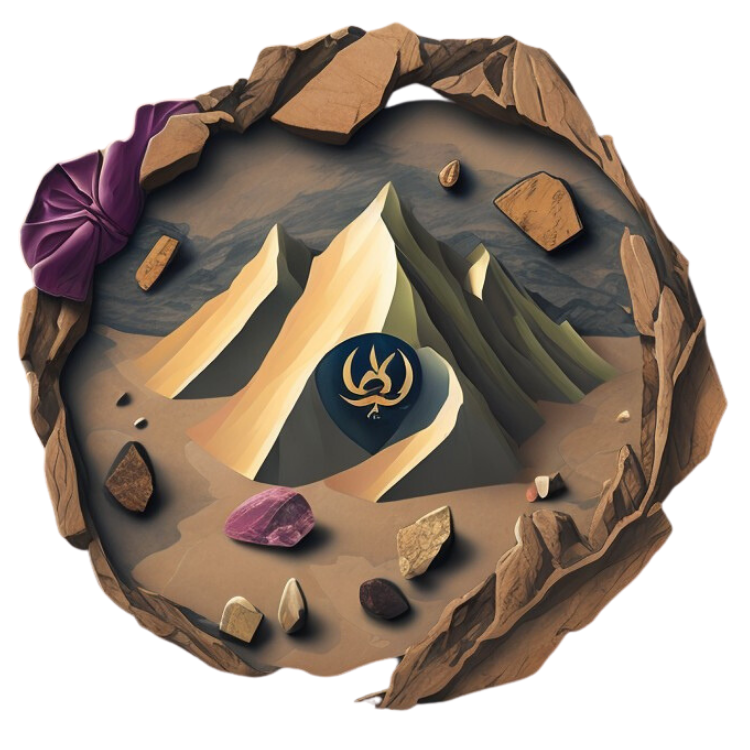Gemstone Carving
What is Gemstone Carving?
Gemstone carving is a specialized technique in lapidary where intricate designs are sculpted into gemstones and minerals. This art form has been practiced for centuries, from ancient civilizations crafting detailed figures from jade to modern lapidaries creating intricate patterns in agate and quartz. Carving allows artists to bring out the natural beauty of the stone while adding a personal, artistic touch.
The process of carving gemstones is both a science and an art, requiring precision, patience, and a deep understanding of the material being worked on. Carving can range from simple designs, such as initials or symbols, to complex figures and ornate patterns that highlight the unique characteristics of the stone.
This guide explores the essentials of gemstone carving, covering the tools needed, the techniques used, and the best practices for selecting stones that are well-suited for carving. Whether you are new to lapidary or looking to refine your skills, mastering the art of carving can open up a world of creative possibilities.
Tools and Techniques for Gemstone Carving
Gemstone carving requires specialized tools designed to handle the hardness and brittleness of various gemstones. The primary tools used in carving include diamond-tipped burrs, rotary tools, and various abrasives for shaping and smoothing the stone. These tools allow for precise control and the ability to create detailed designs.
The carving process typically begins with a rough outline of the design, which is then refined through a series of cutting, grinding, and polishing steps. Carvers often work under magnification to ensure accuracy, especially when working on small or intricate details. The choice of tools and techniques will depend on the type of stone and the complexity of the design.
For those interested in learning more about the tools needed for gemstone carving, our Lapidary Equipment Guide provides recommendations on the best tools for both beginners and experienced carvers.
Selecting Stones for Carving
The selection of the right stone is crucial in gemstone carving. Stones that are too brittle or have a high tendency to fracture may not be suitable for intricate carvings. Conversely, stones that are too soft may not hold fine details well. Therefore, it's important to choose a stone that balances hardness with workability.
Popular stones for carving include jade, agate, quartz, and onyx. These materials are relatively hard, allowing for detailed work, while also being durable enough to withstand the carving process. Additionally, these stones often have unique color patterns and translucency, which can add depth and interest to the final carved piece.
In this section, we discuss how to evaluate stones for carving, considering factors like hardness, fracture patterns, and aesthetic qualities. Understanding these factors will help you choose the best stones for your carving projects and achieve the desired results.
For more guidance on stone selection, visit our Gemology Guide.
Finishing Touches in Gemstone Carving
The final steps of gemstone carving involve adding the finishing touches that bring the piece to life. This includes refining details, smoothing surfaces, and applying a polish that enhances the stone's natural beauty. These finishing touches are what set apart a good carving from a great one.
Finishing techniques vary depending on the type of stone and the desired outcome. Polishing compounds, buffing wheels, and ultrasonic cleaners are commonly used to achieve a smooth, glossy finish. For some carvings, additional techniques like sandblasting or acid etching may be used to create texture or highlight certain areas of the design.
In this section, we provide detailed instructions on how to finish your carved pieces to a professional standard, including tips on polishing, cleaning, and adding any final touches that will enhance the overall appearance of your work.
Troubleshooting Common Issues in Gemstone Carving
As with any lapidary art, gemstone carving can present challenges. Common issues include tool marks, uneven surfaces, and fractures during the carving process. These problems can be frustrating, but with the right approach, they can often be corrected or avoided altogether.
Tool marks, for example, are often the result of using the wrong type of burr or applying too much pressure. To avoid this, it's important to select the appropriate tools for the task and work slowly and carefully. If tool marks do occur, they can usually be removed by refining the surface with finer abrasives and careful polishing.
Fractures and chips can occur if the stone is not supported properly during carving or if too much force is applied. To minimize the risk of damage, it's important to work with a steady hand and ensure that the stone is securely held in place. If a fracture does occur, depending on the extent, it may be possible to incorporate it into the design or repair it with an appropriate adhesive.
Gemstone Carving Video Tutorials
For those who prefer visual learning, we've selected two excellent video tutorials that provide step-by-step guidance on gemstone carving. These videos cover everything from the initial design to the final polish, offering valuable insights and tips for both beginners and experienced carvers.
